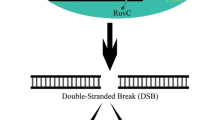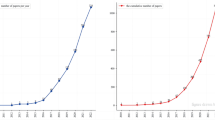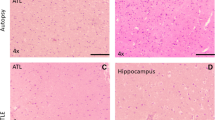Abstract
The focus of modern biomedical research concentrates on molecular level regulatory mechanisms and how the normal and abnormal phenotypes of tissue functional are affected by regulatory mechanisms. Most of the research on regulatory mechanism starts from the reconstruction of gene regulation network. At present, a large number of reconstruction methods construct the network using a single data set. These methods of inferring and predicting the relationship between the target gene and the transcription factor (TF) can be used to identify individual interactions between genes, while there is not much research on the interaction of many functional-related genes. In this paper, an integrated approach based on multi-data fusion is used to reconstruct the network on Alzheimer’s disease (AD) which is the most common form of dementia. It not only considers the interaction between many functional-related genes and the TFs that have important implications for regulatory mechanisms, but also detects new genes associated with specific gene function expression. Protein interaction data, motif data and gene expression data of AD were integrated to gain insight into the underlying biological processes of AD. This method takes into account the TF on the target gene regulation, at the same time also considers co-expression mechanism of the TF and co-regulatory mechanism of the target gene. Eventually, not only a number of genes such as E2F4 and ATF1 related to the pathogenesis of AD have been identified, but also several significant biological processes, such as immunoregulation and neurogenesis, have been found to be associated with AD.




Similar content being viewed by others
References
Kong W, Zhang N, Yang Y, Mou X-Y (2015) The construction of functional modules based on inflammation in Alzheimer’s disease. J Anhui Univ (Nat Sci) (1)
Perry VH, Holmes C (2014) Microglial priming in neurodegenerative disease. Nat Rev Neurol 10:217–224
Carlberg C, Molnár F (2014) Mechanisms of gene regulation. Springer, Amsterdam
Kong W, Cui DB, Mou X-Y (2013) Using network component analysis to dissect dynamic expression of gene and network structure in Alzheimer’s Disease. Chin J Biomed Eng 32(4)
Tao WJ, Kong W (2012) Discovering gene expression regulatory networks of incipient AD based on NMF. J Anhui Univ (Nat Sci) 36(1)
Faith JJ, Hayete B, Thaden JT, Mogno I, Wierzbowski J et al (2007) Large-scale mapping and validation of Escherichia coli transcriptional regulation from a compendium of expression profiles. PLoS Biol 5:e8
Altay G, Emmert-Streib F (2011) Structural influence of gene networks on their inference: analysis of C3NET. Biol Direct 6:31
Glass K, Huttenhower C, Quackenbush J et al (2013) Passing messages between biological networks to refine predicted interactions. PloS One 8(5):59–59
Zheng GY (2009) Excavation of mammalian TFs and their target genes. Fudan University, Shanghai
Sun JC, Xu JL, Li YX, Shi TL (2005) Analysis and Application of Protein Protein Interaction Data. Chin Sci Bull 50(19)
D’Haeseleer P, Liang S, Somogyi R (2000) Genetic network inference: from co-expression clustering to reverse engineering. Bioinformatics 16:707–726
Lemmens K, Dhollander T, De Bie T, Monsieurs P, Engelen K et al (2006) Inferring transcriptional modules from ChIP-chip, motif and microarray data. Genome Biol 7:R37
Nariai N, Tamada Y, Imoto S, Miyano S (2005) Estimating gene regulatory networks and protein-protein interactions of Saccharomyces cerevisiae from multiple genome-wide data. Bioinformatics 21(Suppl 2):ii206–ii212
Hartemink AJ, Gifford DK, Jaakkola TS, Young RA (2002) Combining location and expression data for principled discovery of genetic regulatory network models. Pac Symp Biocomput 7:437–449
Rogers DJ, Tanimoto TT (1960) A Computer Program for Classifying Plants. Science 132:1115–1118
Frey BJ, Dueck D (2007) Clustering by passing messages between data points. Science 315:972–976
Mccall MN, Bolstad BM, Irizarry RA (2011) Frozen robust multiarray analysis (fRMA). BMC Bioinform 12(1):369
Zheng G, Tu K, Yang Q et al (2008) ITFP: an integrated platform of mammalian TFs. Bioinformatics 24(20):2416–2417
Ravasi T, Suzuki H, Cannistraci CV, Katayama S, Bajic VB, Tan K et al (2010) An atlas of combinatorial transcriptional regulation in mouse and man. Cell 140(5):744–752. https://doi.org/10.1016/j.cell.2010.01.044
Persengiev SP, Kondova II, Kilpatrick DL (1999) E2F4 actively promotes the initiation and maintenance of nerve growth factor-induced cell differentiation. Mol Cell Biol 19(9):6048
Morillo SM, Abanto EP, Román MJ et al (2012) Nerve growth factor-induced cell cycle reentry in newborn neurons is triggered by p38MAPK-Dependent E2F4 Phosphorylation. Mol Cell Biol 32(14):2722
Cuevas NDL, Muñoz Ú, Bartolomé F et al (2010) Cell cycle and Alzheimer’s disease: studies in non-neuronal cells. J Appl Biomed 8(3):121–130
Ma YX, Wu ZQ, Feng YJ et al (2015) G protein coupled receptor 50 promotes self-renewal and neuronal differentiation of embryonic neural progenitor cells through regulation of notch and wnt/β-catenin signalings. Biochem Biophys Res Commun 458(4):836–842
Xing Z, Chen C, Chen L et al (2016) The use of Gene Ontology terms and KEGG pathways for analysis and prediction of oncogenes. Biochim et Biophys Acta (BBA) Gen Subj 1860(11):2725–2734
Caraci F, Battaglia G, Bruno V et al (2011) TGF-β1 pathway as a new target for neuroprotection in Alzheimer’s disease. Cns Neurosci Ther 17(4):237–249
Kim S, Na JG, Hampsey M et al (1997) The Dr1/DRAP1 heterodimer is a global repressor of transcription in vivo. Proc Natl Acad Sci USA 94(3):820
Reid SJ, Whittaker DJ, Greenwood D et al (2009) A splice variant of the TATA-box binding protein encoding the polyglutamine-containing N-terminal domain that accumulates in Alzheimer’s disease. Brain Res 1268:190–199
Takii R, Fujimoto M, Tan K et al (2015) ATF1 modulates the heat shock response by regulating the stress-inducible heat shock factor 1 transcription complex. Mol Cell Biol 35(1):11–25
Caine J, Sankovich S, Antony H et al (2010) Alzheimer’s Aβ fused to green fluorescent protein induces growth stress and a heat shock response. Fems Yeast Res 7(8):1230–1236
Ramalho RM, Borralho PM, Castro RE et al (2006) Tauroursodeoxycholic acid modulates p53-mediated apoptosis in Alzheimer’s disease mutant neuroblastoma cells. J Neurochem 98(5):1610–1618
Chen L, Iraci N, Gherardi S et al (2010) p53 is a direct transcription target of MYCN in neuroblastoma. Can Res 70(4):1377–1388
Koach J, Murray JE, Mccarroll J et al (2016) Proffered Paper: Targeting PA2G4, a novel MYCN co-factor, for the treatment of neuroblastoma. Eur J Cancer 61:S7-S7
Bernstein HG, Kirches E, Bogerts B et al (2013) Wide distribution of CREM immunoreactivity in adult and fetal human brain, with an increased expression in dentate gyrus neurons of Alzheimer’s as compared to normal aging brains. Amino Acids 45(6):1373–1383
Kushwah R, Oliver JR, Wu J et al (2011) Elf3 regulates allergic airway inflammation by controlling dendritic cell-driven T cell differentiation. J Immunol 187(9):4639–4653
Ciaramella A, Bizzoni F, Salani F et al (2010) Increased pro-inflammatory response by dendritic cells from patients with Alzheimer’s disease. J Alzheimers Dis 19(19):559–572
Wang J, Zhao W, Freire D et al (2014) Novel role of the depression-associated gata1 transcription factor in Alzheimer’s disease. Alzheimer’s Dementia 10(4):P332-P332
Qin W, Zhou AH, Zuo XM, Wang F, Cheng Z (2011) The study on the role of TF GATA binding protein 3 in familial Alzheimer’s disease pathogenesis. Chin J Neurol 44(03):159–162
Paris D, Mathura V, Aitghezala G et al (2011) Flavonoids lower Alzheimer’s A production via an NF-kB dependent mechanism. Bioinformation (6):229–236
Bregman DB, Pestell RG, Kidd VJ (2000) Cell cycle regulation and RNA polymerase II. Frontiers Biosci A J Virtual Libr 5(2):D244
Kindly check and provide the missing Reference [41]
Itzhaki RF, Wozniak MA (2008) Herpes simplex virus type 1 in Alzheimer’s disease: the enemy within. J Alzheimer’s Dis 13(4):393
Pathan M, Keerthikumar S, Ang CS, Gangoda L, Quek CMJ, Williamson NJ, Mouradov D, Sieber OM, Simpson RJ, Salim A, Bacic A, Hill AF, Stroud DA, Ryan MT, Agbinya JA, Mariadasson JM, Burgess AW, Mathivanan S (2015) FunRich: a standalone tool for functional enrichment analysis. Proteomics 15:2597–2601
Baglietto-Vargas D, Sánchez-Mejias E, Navarro V, Jimenez S, Trujillo-Estrada L, Gómez-Arboledas A, Sánchez-Mico M, Sánchez-Varo R, Vizuete M, Dávila JC, García-Verdugo JM, Vitorica J, Gutierrez A (2017 Aug) Dual roles of Aβ in proliferative processes in an amyloidogenic model of Alzheimer’s disease. Sci Rep 7(1):10085
Fumei W, Xiaohong X (1997) The Membrane Proteins of Synaptic Vesicle and Local Regulation in the Neurotransmitter Release. Progress Biochem Biophys 24(3):211–214
Li J (2015) Effects of presenilin-2 on inflammation and its role in the development of Alzheimer ‘s disease. East China Normal University, Shanghai
Zhang Z (2015) A Study on the Function of DAP12 in Alzheimer’s Disease. Xiamen University, Xiamen
Von Mering C, Krause R, Snel B et al (2002) Comparative assessment of Large-scale sets of Protein-protein Interactions. Nature 417:399—403
Hecker M, Lambeck S, Toepfer S et al (2009) Gene regulatory network inference: data integration in dynamic models-a review. Bio Syst 96(1):86–103
Binding Data on Motif Discovery Files for Harbison et al (2011). http://fraenkel.mit.edu/Harbison/release_v24/Harbison_Gordon_yeast_v9.11.csv.gz. Accessed 2011 July
Le DH, Pham VH (2016) Random walk with restart: A powerful network propagation algorithm in Bioinformatics field. In: The, International Conference on Computational Social Networks
Zhang Z, Zhang J, Chao F et al (2017) KATZLGO: Large-scale prediction of LncRNA functions by using the KATZ measure based on multiple networks. IEEE/ACM Trans Comput Biol Bioinform PP(99):1–1
Acknowledgements
This work was supported by the National Natural Science Foundation of China (No. 61271446) and Innovation Program of Shanghai Municipal Education Commission (No. 15ZZ079).
Author information
Authors and Affiliations
Corresponding author
Ethics declarations
Conflict of interest
The authors declare no conflict of interests.
Rights and permissions
About this article
Cite this article
Ding, J., Kong, W., Mou, X. et al. Construction of Transcriptional Regulatory Network of Alzheimer’s Disease Based on PANDA Algorithm. Interdiscip Sci Comput Life Sci 11, 226–236 (2019). https://doi.org/10.1007/s12539-018-0297-0
Received:
Revised:
Accepted:
Published:
Issue Date:
DOI: https://doi.org/10.1007/s12539-018-0297-0




